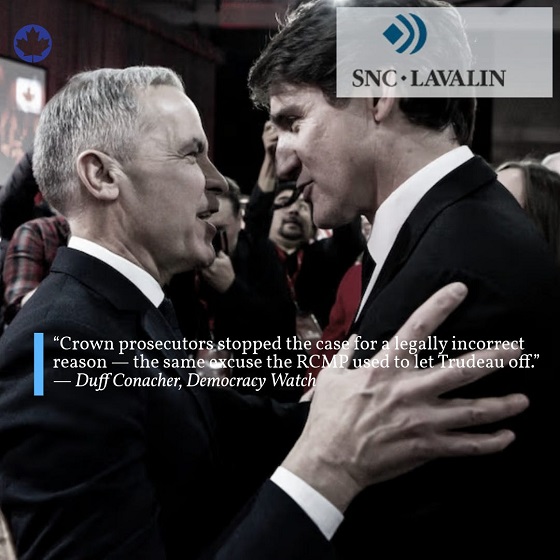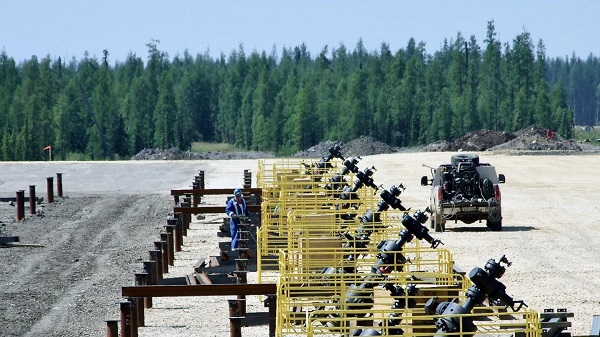Opinion
Election 2017, Advance Polls open this Saturday. North/South inequality a surprise to some but not all.

The big issue facing the candidates in a multitude of ways is the North/South inequality in regards to investment, education, recreation, youth, air quality to name but a few. Some show doubts but will let me know that I was right.
I found out that 31% of the population of Red Deer live north of the river. A number that is significant because in 1985 40% lived north of the river.
Years ago the north side residents voted for a slate of north side candidates. We have 8 councillors and 1 mayor so we should have 3 members from the north but for many years we have had only 1, Frank Wong.
31% of the residents represent only 17.6% of the candidates.
Candidates living north of the river are:
Mayor: Sean Burke,
Councillors: Jason Habuza, Kris Maciborsky, Vesna Higham, Frank Wong, Sandra Bergeron, Matt Chapin, Bobbi McCoy
Public School Board: Bev Manning, Matt Chapin
Separate School Board; No Name.
Now if none of these names draw your fancy you might consider Tanya Handley which supports building the Aquatic Centre north of 11A to kick start development.
Michael Dawe for acknowledging the issue and putting their plight into words.
I cannot give a true picture of all 51 candidates. If we were a big city and was broken into 4 wards it would be easier to know your candidates and they would be more aware of the issues.
I am always surprised when candidates and even local residents are amazed after being apprised of the following information. They are not secrets, they are widely known in national news stories, human interest articles and polls, and used in marketing tools by other cities and corporations.
Remember 31% of Red Deer’s residents live north of the river and they have the G.H.Dawe Community Centre developed in the 70s and built in the 80s.
Two thirds of Red Deer’s residents live south of the river and they have the Downtown Recreation Centre, Michener Aquatic Centre, Downtown Arena, Centrium, Collicutt Recreation Centre, Pidherney Curling Centre, Kinex Arena, Kinsmen Community Arenas, Red Deer Curling Centre, and the under-construction Gary W. Harris Centre. The city is also talking about replacing the downtown recreation centre with an expanded 50m pool. Tanya Handley says she will not support this as she thinks it should be built north of 11a.
North of 11a. Thousands of acres up for development, and a 100 acre lake.
I have been talking about Hazlett Lake. Red Deer’s largest lake, located north of the river, north of Hwy 11a because it is up for development. It is a diamond in the rough, with potential that is being ignored at our cost. Lethbridge turned a slough into a lake becoming Henderson Park, a tourist attraction and they were the 5th fastest growing city in Canada, and they are only slightly smaller than Red Deer now and could overtake Red Deer this year.
Red Deer has a lake that the current council wants to wrap with residential and industrial land. The city wants to spend a cool hundred million turning the downtown recreation centre into an aquatic centre. Why not build an Aquatic Centre on a lake? Highly visible from Hwy 2.
The Gary W. Harris centre will be visible from Hwy 2, as is the sports Hall of Fame, as is Hazlett Lake.
If Lethbridge can turn a slough into a tourist attraction why can’t Red Deer turn a lake into a tourist attraction.
Hazlett Lake is about the same distance from the Riverlands development as the Collicutt Centre is from the Riverlands.
The Collicutt Centre came about because the city decided that with 55,000 residents the city needed a 4th recreational centre. It also spurred development in the south east and now 60% of the residents use it.
The development north of 11a would bring the total population north of the river to 55,000 (if we stop the exodus of residents,) but there are no plans for a 2nd recreation centre let alone a 4th north of the river.
There is also no plan, no discussion to stem the outward migration in Red Deer. I sense that the bias against the north is so deep, so entrenched that they do not worry about it.
Lethbridge and Red Deer have similar size population in the same province. Lethbridge is the 5th fastest growing city in Canada and grew by almost 2% per year, while Red Deer shrank by 1% last year.
Lethbridge took a man made slough and turned it into a multi-faceted tourist attraction, while Red Deer will turn a lake into a residential subdivision.
So why I am I suggesting Lethbridge turned lead into gold and Red Deer might be turning gold into lead. Let us look at what Lethbridge did with a man-made slough then look at what Red Deer will do with a lake.
Henderson Lake Park Henderson Lake Park is one of Lethbridge’s premier parks featuring a 24 hectare (59 acre)man made lake, mature trees and groves, gardens, picnic shelters, playgrounds and over 7 km of trails.
Whether you’re a family with small children, an exercise or sports enthusiast, a non-motorized boating enthusiast, a fisherman, a horticulturists, or someone simply looking to get out for a walk this park is definitely for you.
The lake is perfect for kayaks, canoes and paddle boats alike and provides easy access to the water via the boat launch and dock. The dock is often used by fishermen looking to catch Pike, Perch or Whitefish (provincial fishing regulations apply).
For the nature, exercise, and history enthusiasts there is a 2.5 km trail around the lake and another 4.3 km trail around the perimeter of the park providing ample opportunity for one to stretch their legs, check out all of the local wildlife, or view the commemorative and historical markers and displays located throughout the park. There are also great little areas for you to put down a blanket and enjoy a good book, have a picnic or simply relax and watch the world as it goes by.
Henderson Park is also home to the Demonstration and Rose Gardens. The Rose Garden is located in the northwest corner of the park and commemorates 9/11. The Demonstration Gardens are located east of the Tennis Courts and celebrates the contributions of Communities in Bloom to the Community.
Henderson Park is surrounded by a multitude of facilities like the SLP Skate Park, Henderson Horseshoe Pits, the Henderson Lake Golf Course, the Henderson Outdoor Pool, Spitz Stadium, Henderson Park Ice Centre, Henderson Tennis Courts and Nikka Yuko Japanese Garden.
Henderson Park has something to offer absolutely everyone and there isn’t a day where you won’t see families, exercise enthusiasts, seniors, people out exercising their dogs, fishermen, boaters, golfers, and just about everyone else under the sun out enjoying this wonderful park. From the photographic opportunities to the areas for quiet solitude and reflection to the exuberant playgrounds, to the trail system that is linked to the rest of the south side, this park is sure to meet everyone’s needs.
Hazlett Lake Park?
Remember, Hazlett Lake is a natural lake that covers a surface area of 0.45 km2 (0.17 mi2), has an average depth of 3 meters (10 feet). Hazlett Lake has a total shore line of 4 kilometers (2 miles). It is 44 Ha. (108.8 acres) in size. Located in the north-west sector of Red Deer.
Currently on the NADG.com website we will see a residential community around Hazlett Lake. Encompassing about 12 percent of the land north of 11A currently up for development. Phase I will be home to 5,000 residents with the nearest high school on the other side of city on the east end. A K-8 school site to be located north-east of Hazlett Lake currently planned for a later phase.
On nadg.com:
“Hazlett Lake is a 350-acre master planned residential community located in North Red Deer at the intersection of Alberta’s busiest Highway -QE2 and Highway 11A. The community will consist of over 2000 new residential units and will be Phase 1 of Red Deer’s North of 11A Major Area Structural Plan. Additionally, this development will be the first new housing project in North Red Deer in 10 years”
Red Deer also wants to build an Aquatic Centre, and the current plan is to demolish the downtown rec centre and build it there. The Collicutt Centre was built in the south east corner of Red Deer, helped to kick start development. Why not build the Aquatic Centre in the north west corner, kick starting development and build it on Hazlett Lake and create a tourist industry?
An Aquatic Centre on a lake, ludicrous right? A tourist destination highly visible to one of the busiest highways in Canada, insane right? 2 miles of shoreline may have room for a beach, impossible right? The current plans in Red Deer indicates some trails, a small community building with some historical placards, possibly a bathroom and a playground.
Not quite Henderson Lake Park, tourist attraction, is it?
To me Red Deer has a gold mine of an opportunity that will be ignored at the expense of the citizens of Red Deer. Do you agree?
Johnstone Park, saw their planned school go to Inlewood. The city said the neighbourhood was not developed enough for a school, as compared to our new high school sitting in an empty neighbourhood.
Recently, the province stepped up and provided funding for the expansion on St. Patrick’s school in Highland Green, just north of the river. The school’s enrolment was 30% over capacity, a kindergarten class was being taught in a hallway, and students and families were paying the price.
There has not been a school built north of the river since 1985, perhaps that could explain why some schools are at 130% capacity and classes are held in hallways. There is no high schools north of the river, even though up to 40% of the population resided there. Could be why 777 more residents moved out of the north side and out of the city than moved into the area. Remember there are 4 high schools south of the river with 2 more planned. There are no high schools planned for the north side of the river even with thousands of acres north of 11a coming up for development and 25,000 more residents planned.
The Ministry of Education says they follow the direction of the local school boards.
What do the school board trustees, past and present have to say?
Public School Board incumbent and candidate, Dianne Macaulay had this to say;
“We have a variety of measures that can help the board determine growth in our schools. One is a system our district has been using for years call Baragard. This projects population demographics to help us determine possible new boundary’s when schools become full or when we are submitting our three year capital plan to the government for new schools needed. I can only answer your question regarding the building of schools.
The city is ultimately responsible for the placement of development including schools.
Some green spaces will have a sign indicating “This is a potential site of a public or separate school”. This can give people that are thinking about moving into that neighbourhood a heads up . But it doesn’t mean a school WILL be built.
Our latest school Don Campbell was needed but the government only gave us 3 month to determine a site. The city will not allow a school to be built unless the surrounding area is developed. So even thou a school may have been better off in another location , we only had sites on that end of the city that were currently developed
Lets talk about about the current high school project.
This was a massive joint project between Red Deer Public , Red Deer Catholic, the Francophone district and the city. The original plan was to build a joint use high school for all 3 boards. This would be a one of kind in Alberta and a large amount of space was needed for this so the city choose where it had the most to give at the time. Over 14 months of planning went into this and in the end the Bishop vetoed it because Alberta Catholic School Trustee Associations Convenant indicating their belief in how having Catholic and non catholic students together will take away from their Catholic teachings.
So now we have this huge area where will just be 2 or 3 different buildings. This has not saved tax payers one cent! I guess to sum up Garfield , we do look at the population growth and we try to build where the students will be. But sometimes our hands are tied.”
Angela Sommers, a Public School Board candidate says one of the biggest issues is the north/south inequality across schools, “just being north of the river, you can see there’s very little money for the students in the north.” Red Deer Advocate September 28 2017.
Advance polls open on Saturday, September 30, so I am offering you something to remember.
Business
‘TERMINATED’: Trump Ends Trade Talks With Canada Over Premier Ford’s Ronald Reagan Ad Against Tariffs
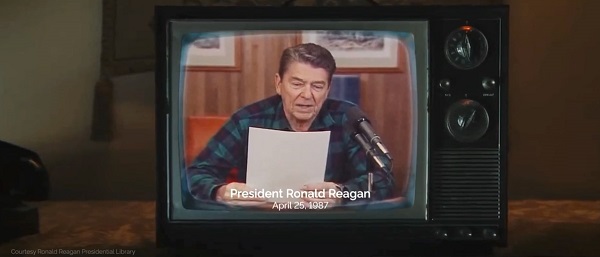

From the Daily Caller News Foundation
President Donald Trump announced late Thursday that trade negotiations with Canada “ARE HEREBY TERMINATED” after what he called “egregious behavior” tied to an Ontario TV ad that used former President Ronald Reagan’s voice to criticize tariffs.
The ad at the center of the feud was funded by Ontario Premier Doug Ford’s government as part of a multimillion-dollar campaign running on major U.S. networks. The spot features Reagan warning that tariffs may appear patriotic but ultimately “hurt every American worker and consumer.”
Dear Readers:
As a nonprofit, we are dependent on the generosity of our readers.
Please consider making a small donation of any amount here.
Thank you!
“They only did this to interfere with the decision of the U.S. Supreme Court, and other courts. TARIFFS ARE VERY IMPORTANT TO THE NATIONAL SECURITY, AND ECONOMY, OF THE U.S.A,” Trump wrote on his Truth Social platform late Thursday. “Based on their egregious behavior, ALL TRADE NEGOTIATIONS WITH CANADA ARE HEREBY TERMINATED.”
Ford first posted the ad online on Oct. 16, writing in a caption, “Using every tool we have, we’ll never stop making the case against American tariffs on Canada. The way to prosperity is by working together.”
The Ronald Reagan Presidential Foundation and Institute criticized the ad Thursday evening, saying it “misrepresents” Reagan’s 1987 radio address on free and fair trade. The foundation said Ontario did not request permission to use or alter the recording and that it is reviewing its legal options.
The president posted early Friday that Canada “cheated and got caught,” adding that Reagan actually “loved tariffs for our country.”
The ad splices audio from Reagan’s original remarks but includes his authentic statement: “When someone says, ‘let’s impose tariffs on foreign imports’, it looks like they’re doing the patriotic thing by protecting American products and jobs. And sometimes, for a short while it works, but only for a short time.”
Reagan also noted at the end of his remarks that, in “certain select cases,” he had taken steps to stop unfair trade practices against American products and added that the president’s “options” in trade matters should not be restricted, which the ad did not include.
Since returning to the White House, Trump has imposed tariffs on Canadian aluminum, steel, automobiles and lumber, arguing they are vital to protecting U.S. manufacturing and national security.
The Supreme Court is set to hear arguments in November over whether the administration overstepped its authority by invoking the International Emergency Economic Powers Act to impose reciprocal tariffs on dozens of nations, including Canada. Tariffs on commodities such as steel, aluminum and copper were implemented under Section 232 of the Trade Expansion Act and are not currently being challenged, as they align with longstanding precedent established by prior administrations.
Thursday’s move marks the second time this year Trump has canceled trade talks with Ottawa. In June, he briefly halted discussions after Canada imposed a digital services tax on American tech firms, though the Canadian government repealed the measure two days later.
Energy
National media energy attacks: Bureau chiefs or three major Canadian newspapers woefully misinformed about pipelines
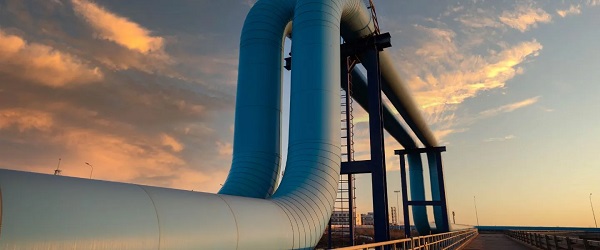
From the Fraser Institute
These three allegedly well informed national opinion-shapers are incredibly ignorant of national energy realities.
In a recent episode of CPAC PrimeTime Politics, three bureau chiefs from three major Canadian newspapers discussed the fracas between Alberta Premier Danielle Smith and Prime Minister Mark Carney. The Smith government plans to submit a proposal to Ottawa to build an oil pipeline from Alberta to British Columbia’s north coast. The episode underscored the profound disconnect between these major journalistic gatekeepers and the realities of energy policy in Canada.
First out of the gate, the Globe and Mail’s Robert Fife made the (false) argument that we already have the Trans Mountain pipeline expansion (TMX), which is only running at 70 per cent, so we don’t need additional pipelines. This variant of the “no market case” argument misunderstands both the economics of running pipelines and the reality of how much oilsands production can increase to supply foreign markets if—and only if—there’s a way to get it there.
In reality, since the TMX expansion entered service, about 80 per cent of the system’s capacity is reserved for long-term contracts by committed shippers, and the rest is available on a monthly basis for spot shippers who pay higher rates due largely to government-imposed costs of construction. From June 2024 to June 2025, committed capacity was fully utilized each month, averaging 99 per cent utilization. Simply put, TMX is essentially fully subscribed and flowing at a high percentage of its physical capacity.
And the idea that we don’t need additional capacity is also silly. According to S&P Global, Canadian oilsands production will reach a record annual average production of 3.5 million barrels per day (b/d), and by 2030 could top 3.9 million b/d (that’s 500,000 b/d higher than 2024). Without pipeline expansion, this growth may not happen. Alberta’s government, which is already coordinating with pipeline companies such as Enbridge, hopes to see oilsands production double in coming years.
Next, Mia Rabson, Ottawa deputy bureau chief of the Canadian Press, implied that Smith’s proposal is not viable because it comes from government, not the private sector. But Rabson neglected to say that it would be foolish for any company to prepare a very expensive project proposal in light of current massive regulatory legislative barriers (tanker ban off B.C. coast, oil and gas emission cap, etc.). Indeed, proposal costs can run into the billions.
Finally, Joel-Denis Bellavance, Ottawa bureau chief of La Presse, opined that a year ago “building a pipeline was not part of the national conversation.” Really? On what planet? How thick is the bubble around Quebec? Is it like bulletproof Perspex? This is a person helping shape Quebec opinion on pipelines in Western Canada, and if we take him at his word, he doesn’t know that pipelines and energy infrastructure have been on the agenda for quite some time now.
If these are the gatekeepers of Canadian news in central Canada, it’s no wonder that the citizenry seems so woefully uninformed about the need to build new pipelines, to move Alberta oil and gas to foreign markets beyond the United States, to strengthen Canada’s economy and to employ in many provinces people who don’t work in the media.
-

 Agriculture1 day ago
Agriculture1 day agoFrom Underdog to Top Broodmare
-

 Carbon Tax2 days ago
Carbon Tax2 days agoBack Door Carbon Tax: Goal Of Climate Lawfare Movement To Drive Up Price Of Energy
-
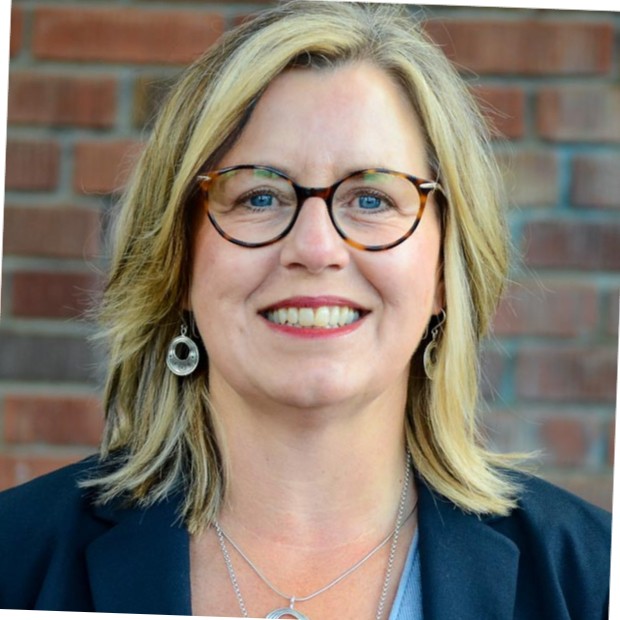
 City of Red Deer1 day ago
City of Red Deer1 day agoCindy Jefferies is Mayor. Tristin Brisbois, Cassandra Curtis, Jaelene Tweedle, and Adam Goodwin new Councillors – 2025 Red Deer General Election Results
-
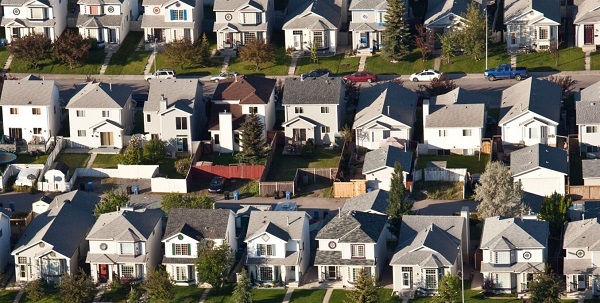
 Alberta2 days ago
Alberta2 days agoCalgary’s High Property Taxes Run Counter to the ‘Alberta Advantage’
-

 Alberta1 day ago
Alberta1 day agoAlberta’s licence plate vote is down to four
-
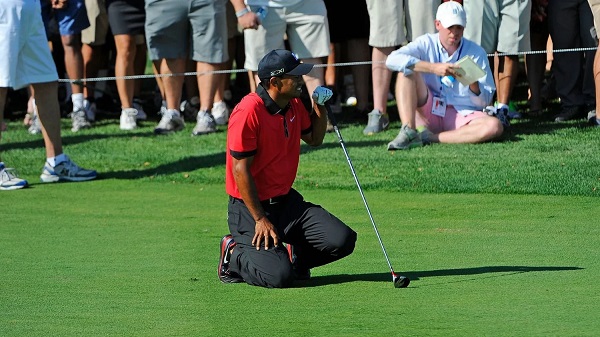
 Bruce Dowbiggin1 day ago
Bruce Dowbiggin1 day agoIs The Latest Tiger Woods’ Injury Also A Death Knell For PGA Champions Golf?
-

 Digital ID2 days ago
Digital ID2 days agoThousands protest UK government’s plans to introduce mandatory digital IDs
-
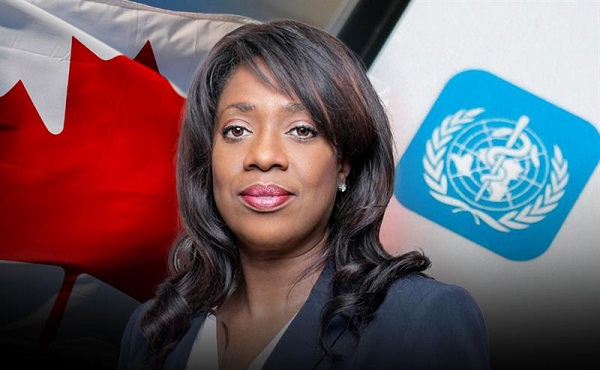
 Health1 day ago
Health1 day agoSovereignty at Stake: Why Parliament Must Review Treaties Before They’re Signed



